
I’ve been reading Young Eliot: From St. Louis to the Waste Land by Robert Crawford, a biography of T.S. Eliot’s life from 1888 to 1922. The period encompasses what are perhaps his greatest and best known works: The Love Song of J. Alfred Prufrock, The Hollow Men, and The Waste Land. For major works, only Four Quartets lies outside this period.
I knew he was born and raised in St. Louis, where I’ve lived since 1979. But he is something on a non-entity here in this city that continues to celebrate its past (it’s almost a legal requirement to know about the 1904 World’s Fair) while it tries to find new ways to sabotage its future.
Little physical evidence of Eliot remains in the city. There is the house on Westminster Place in the Central West End where his family moved when he was 16. He was only there a year before he headed off to school in the Boston area, first a year at a prep school and then Harvard. There is a medallion in the sidewalk in front of the place where the house he was born and raised in once stood.
In fact, it was this space I recently went looking for, inspired by the narrative in Young Eliot. I had a meeting with a marketing firm on Locust Street in what we call mid-town St. Louis, near St. Louis University and the entertainment district that includes the restored Egyptian Rococo Fox Theatre and Powell Hall, home of St. Louis Symphony. Five blocks east of my meeting and closer to downtown is the space that was once 2635 Locust Street, the home of Henry and Lottie Eliot and their six children, of whom Thomas Stearns Eliot, or Tom, was the youngest. His parents were 45 when he was born.
What was the home of the Eliots at 2635 Locust Street is now a parking lot. Even more, it is a fenced parking lot, replete with weeds and empty parking spaces. Crawford suggests that what was happening to the neighborhood might have contributed to the images of The Waste Land. “Waste land” could certainly describe what is there today.
In my beginning is my end. In succession
Houses rise and fall, crumble, are extended,
Are removed, destroyed, restored, or in their place
Is an open field, or a factory, or a by-pass.
Old stone to new building, old timber to new fires,
Old fires to ashes, and ashes to the earth
Which is already flesh, fur, and faeces,
Bone of man and beast, cornstalk and leaf.
Houses live and die: there is a time for building
And a time for living and for generation
And a time for the wind to break the loosened pane
And to shake the wainscot where the field mouse trots
And to shake the tattered arras woven with a silent motto.
– T. S. Eliot, East Coker (from Four Quartets)
Next door was the Eliot School for Girls, founded by Henry’s father, William; over the years, it would move and change its name, eventually becoming the most exclusive school for girls in the St. Louis area. A few years ago, what was then called Mary Institute (named after Mary Eliot) merged with the most exclusive boys school, Country Day, to form MICDS, or Mary Institute-Country Day School.
Henry, Tom’s father, wasn’t associated with the school; he was vice president of a brick manufacturing company. St. Louis likely should have been called “Brick City”—much of the housing stock in the city itself is red brick. The city was once a center for brick manufacturing and sales, and Tom’s father had a significant role in it.
They were well-to-do, the Eliots were, with the home on Locust Street and a summer house in Massachusetts. But even when Tom was a child, the neighborhood was changing, becoming less genteel. Most of their well-to-do neighbors moved farther west, and eventually the Eliots did, too, to the well-appointed home on Westminster Place. That home still exists.
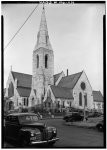
If Eliot School and the Church of the Messiah weren’t enough, what William Eliot is best known for is the founding of Washington University in St. Louis. The university does have an Eliot Society, but it’s devoted to fundraising and named for William, not Tom. “WashU, ” as we call it, is where I earned my master’s degree. I’ve heard a number of authors speak there, including Nobel Prize winner Mario Vargas Llosa, Carlos Fuentes, and foodie author Michael Pollan. (If you’re interested, Vargas Llosa and Fuentes talked of great literature; Pollan entertained the undergraduates.)
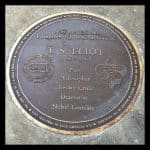
But he’s there, in the empty parking lots and the three-story building next door, which was there when he was a boy. And he took all of this with him when he went off to Harvard and eventually London. And St. Louis was there when he wrote some of the most significant poetry of the 20th century.
His soul stretched tight across the skies
That fade behind a city block,
Or trampled by insistent feet
At four and five and six o’clock;
And short square fingers stuffing pipes,
And evening newspapers, and eyes
Assured of certain certainties,
The conscience of a blackened street
Impatient to assume the world.
I am moved by fancies that are curled
Around these images, and cling:
The notion of some infinitely gentle
Infinitely suffering thing.
Wipe your hand across your mouth, and laugh;
The worlds revolve like ancient women
Gathering fuel in vacant lots.
– T.S. Eliot, Preludes, IV
Photo by Raffaele Esposito, Creative Commons, via Flickr. Post by Glynn Young, author of the novels Dancing Priest and A Light Shining, and Poetry at Work.
__________________________

“I require all our incoming poetry students—in the MFA I direct—to buy and read this book.”
—Jeanetta Calhoun Mish
- Happy Thanksgiving, from Tweetspeak Poetry (and Henry Wadsworth Longfellow) - November 27, 2025
- Finding Poetry in an Anselm Kiefer Art Exhibition - November 25, 2025
- Poets and Poems: Autumn Williams and “Clouds on the Ground” - November 20, 2025
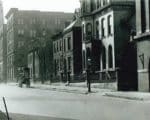
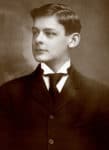
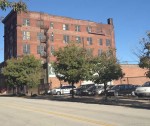
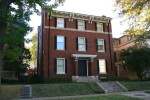
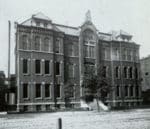
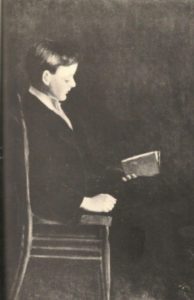
Maureen says
Good piece, Glynn!
Glynn says
Maureen, thank you.
Lynn D. Morrissey says
Thanks, Glynn. As a native St. Louisan (must I say how long I’ve lived here?), I was but vaguely aware of the TS Eliot connection, and you’re right: We don’t pay much attention to him (to our chagrin). What a fascinating history, and it proves that our past informs our present. I think I will look up that house in the CWE. And thank you for the other historical information, like the MICDS-and-Wash U connections. And I thought that the latter was named after our first president. My ignorance is really showing here. I think I will get a book of Eliot’s poetry. It’s wonderful. Thanks so much for a walk down memory lane, what’s left of it. It’s a shame that the original house no longer exists.
Lynn
Glynn says
Lynn, there’s little of what Eliot they boy knew that remains — although he was familiar with what was then the “new” Union Station, the fountain across from it and some of the houses that still exist.His parents moved to Westminster Place when he was 16 — about the time of the 1904 World’s Fair.
Thanks for reading, and for the comment!
Sandra Heska King says
You *know* I love this!
As an aside, we took a trip down memory lane a few years back. What used to be my mom’s childhood home is the parking lot to a funeral home.
Glynn says
Sandra, what was my first home in New Orleans is now the parking lot of a drugstore, so I emphathize with you (and Eliot). Thanks for reading the article!
Lynn D. Morrissey says
Sigh . . . Sandy. My childhood home exists, and when my husband was a housing inspector it came up on his schedule. So, promising not to open my mouth, he took me through it. What a joy. Sadly, Sheridan’s childhood home has already been razed. My your memories will never be razed, I’m sure.
Denise Frame Harlan says
This is so fun! Eliot spent his summers in Gloucester MA, and I have also looked for traces of Eliot in Cape Ann. I can see The Lady on the promontory, which is Our Lady of Good Voyage, and I can see The Dry Salvages (visible from the shore). His summer home will become a museum/literary center in the next few years. This is great news, since none of the tourist literature covers Eliot, here.
Matt Mehan says
Thank you for this. I’m doing a poetry book tour in St. Louis, and this was both somewhat sad and very helpful. I’m tempted to do a book signing in front of that Wasteland! A great image of rebuilding America’s love of poetry! No place to go but up!
Glynn says
There’s a building next to the parking lot that was there when Eliot’s house was. You can see it in a couple of the photos above. But it might be a cool idea (on a cool day; you wouldn’t want to do it in the summer) for a book tour.
Jimmy Powell says
Nice article, I purchased the five story which was built by Henry in response to the worlds fair to put the Wash U dental school in to in 1902. TS was born in the house next-door as you mentioned but the foundations and some of the walls are still here underneath the “candy” building. The plaque in the sidewalk is a spot it is based on the old addresses not the actual lot numbers. I believe there is the actual door way as part of there house opening to a brick Alley in between five story in their house. I’ve done all the research on the plot numbers if you’re interested. Im making some type of marquee on the door or wall someday.
Glynn says
It’s fascinating that walls, a door, and foundations may still be there. This sounds like a poem Eliot would write.